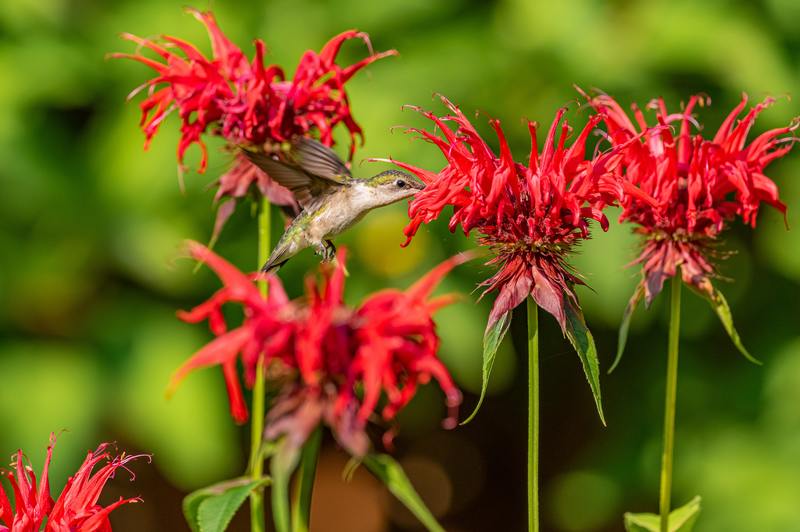In flower gardening, it gives satisfaction to gardeners seeing flower buds start to bloom. However, knowing how to get rid of powdery mildew on bee balm is advised for you, especially since it is displeasing to see mildew wreaking havoc on your flora.
It is not enough to water your flower garden, cultivate the soil, or remove grass, but it is essential to check the condition of the main plant. If you are new to flower gardening, it is suggested to read articles like this to become an expert in that field.

According to flower experts, bee balm benefits provide medicinal and culinary purposes, from leaves to flowers. Additionally, bee balm is native to North America and comprises 15 variants, and it blooms from late spring to fall.
In other regions, bee balm is also referred to as bergamot, horsemint, and Oswego tea. With its helpful attributes, flower gardeners prefer to plant bee balm in their yard, plus it is considered non-toxic for children and pets.
Powdery Mildew On Bee Balm
Mildew is a type of fungi closely related to mold you wouldn’t want to encounter in your garden. It could be a pest to your flower garden, which can deteriorate the appearance of its flower.
Its texture could be powdery, making it easy to spread while its spores travel through the air. Meaning, a single plant that is infested with powdery mildew could affect other plants.
With its ability to spread from plant to plant, the best thing to do is spot the affected bee balm plant, and then get rid of it. With that, you can prevent further damage to your plants.
However, if you are new to this problem, this might be challenging to resolve. Spotting affected bee balm is hard, not unless you know what it looks like.
Powdery mildew on bee balm could be seen as patches of white or gray that look strange on plants. Yet, if you are familiar enough with the appearance of bee balm, it is easy for you to distinguish powdery mildew.
Treating Powdery Mildew On Bee Balm
For flower gardeners, caring for their plants until their buds bloom is a commitment to bear. It is not just a mere job but an overwhelming passion, therefore doing all necessary interventions to treat powdery mildew is typical for gardeners.
1. Use of antitranspirants and oils
According to plant enthusiasts, antitranspirant spray can combat powdery mildew on plants and other foliar diseases. However, it reduces plants’ ability to photosynthesize, then it is suggested to be used only in sunny weather.
Meanwhile, oils can be used to treat powdery mildew on bee balm. Oils such as vegetable oil, neem oil, mint oil, and rosemary oil are found effective in controlling powdery mildew.
To create the mixture, use liquid soap to emulsify the oil and combine it with water at a rate of 3 tablespoons of oil per gallon of water.
2. Sodium bicarbonate (baking soda)
Baking soda has long been used in fighting mildew spore because of its antifungal properties. To treat powdery mildew on bee balm, just combine 1 & ½ tablespoon of sodium bicarbonate in a gallon of water to create a solution.
Use a spray bottle to treat specific areas of bee balm conveniently. Spray the solution at least three times a week, depending on the severity of mildew infection.
3. Garlic and liquid soap spray
In treating powdery mildew on bee balm, using garlic is one best ingredient you should consider. To create the mixture, soak the crushed garlic in water and add some liquid soap to add fragrance.
The longer the garlic is soaked, the better. With that simple solution, you can solve mildew problems with ease.
To learn more, have a glance at this article which discusses how to treat powdery mildew on gardenia for better gardening.
Tips to prevent mildew growth
Even though it’s summer, bee balm can still get powdery mildew. It is because of mildew’s ability to withstand different environmental conditions, for as long as there is moisture, oxygen, and organic matter to feast on.
Whereas, powdery mildew can destroy a plant’s appearance while hindering its growth. To avoid that, here are some tips to prevent mildew growth on bee balm.
- Watering your plants regularly can help eradicate mildew spores that linger on your plants. Though mildew love moisture, free water is different from the water that comes from the air, which causes mildew growth.
- Powdery mildew is often seen on crowded plants in shaded and damp areas where there is poor air circulation. With that, the best thing to do is prune your plants and eliminate any affected areas.
For more flower gardening tips, you should read methods on how to treat powdery mildew on roses.
Conclusion
Being aware of the risks of powdery mildew on plants is the responsibility of every gardener. Therefore, learning how to get rid of powdery mildew on bee balm is the best gardening care tips you could have.
Indeed, it’s pleasant to see flowers bloom to their finest.
